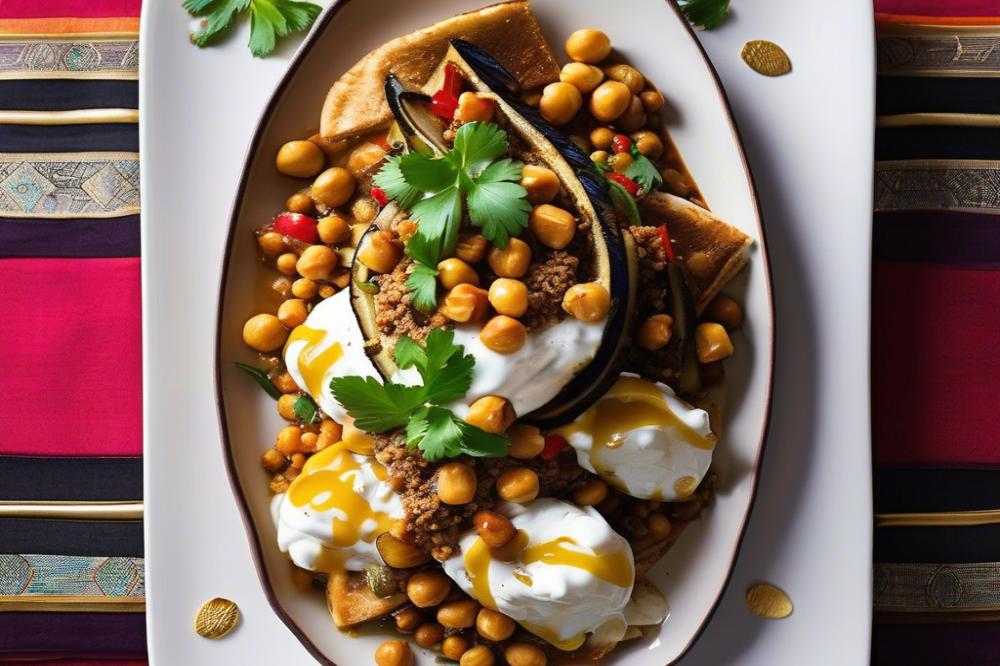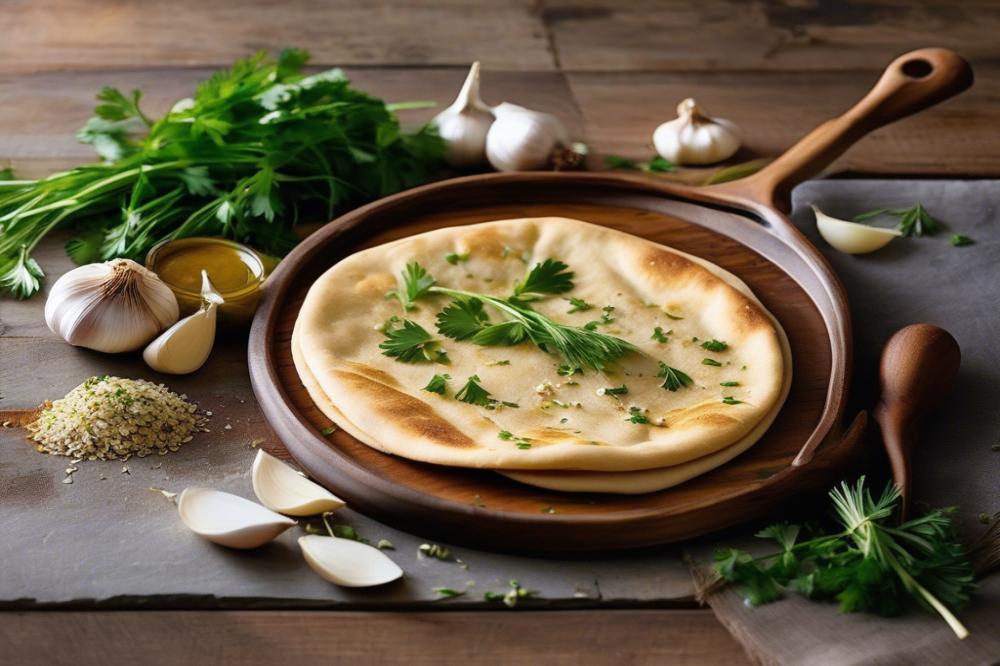Exploring the Flavors of Lebanese eggplant Fatteh
Lebanese cuisine holds a special place within the rich tapestry of Mediterranean culinary traditions. It showcases the region’s diversity through its use of fresh ingredients, bold spices, and vibrant flavors. Many dishes reflect a harmonious blend of influences from neighboring cultures, making Lebanese food unique and beloved.
One classic dish that encapsulates this essence is Lebanese eggplant Fatteh. This delightful recipe highlights the wonderful marriage of eggplant, tahini, and chickpeas, creating a layered experience of taste and texture. Fried to perfection, the eggplant complements the creaminess of tahini, while garlic adds a punch of flavor. Crispy pita bread gives each bite a satisfying crunch, playing off the creamy yogurt that often crowns the dish.
Spices infuse warmth and depth in every layer, enriching the overall experience. Different variations exist, each bringing something special to the table. Aromatic ingredients dance together, crafting a dish that delights the senses. In Lebanon, Fatteh is more than just food; it represents heritage and hospitality. From casual meals to festive gatherings, this dish remains a timeless favorite, inviting everyone to explore its layered flavors.
Lebanese Eggplant Fatteh: Ingredients and Cooking Instructions
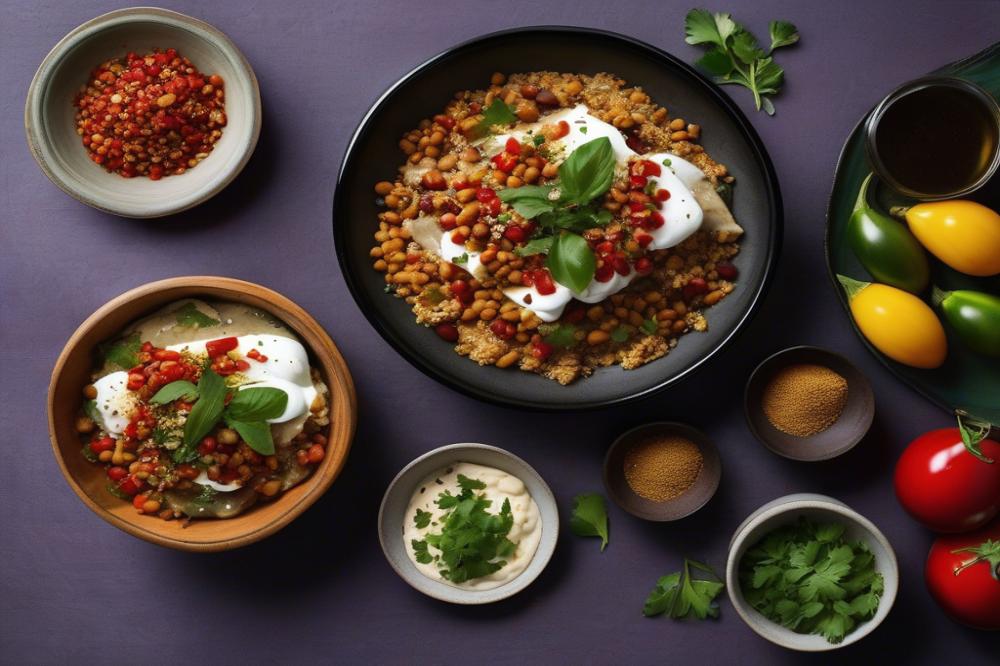
Ingredients
- 2 medium eggplants
- 1 can (15 oz) of chickpeas
- 1 cup of plain yogurt
- 1/4 cup of tahini
- 3 cloves of garlic, minced
- 4 pieces of pita bread
- 1 tsp of cumin powder
- 1 tsp of paprika
- Salt and pepper to taste
- 2 tbsp of olive oil
- Fresh parsley for garnish
Cooking Instructions
Begin by preheating your oven to 400°F (200°C). Next, slice the eggplants into rounds or cubes and sprinkle them with a bit of salt. Let them rest for about 20 minutes. This process draws out excess moisture and bitterness in the vegetable.
After the resting time, rinse off the salt and pat the eggplants dry with a clean kitchen towel. Toss the dried pieces with olive oil, then spread them on a baking sheet. Roast these eggplant pieces for approximately 20 to 25 minutes, or until they turn golden brown and tender.
While the eggplants are roasting, focus on preparing the chickpeas. Open the can, then rinse and drain the chickpeas to remove excess sodium and preservatives. They add a hearty texture and protein to your dish.
In a mixing bowl, combine the yogurt with tahini, minced garlic, cumin, paprika, and some salt and pepper. Whisk them together until you achieve a smooth sauce, which will enhance the flavors of your Mediterranean dish.
Toast the pita bread until it becomes crispy and golden. You can do this in the oven or on a skillet. Set the toasted bread aside, as it will form the base layer of your fatteh.
Assembly is key for a beautiful presentation. Start by layering the toasted pita bread at the bottom of a serving dish. Add the roasted eggplant pieces on top, followed by a generous amount of chickpeas. Finally, drizzle the yogurt sauce you prepared earlier over the layers.
Before serving, sprinkle fresh parsley on the top for a lovely touch of color and flavor. This Lebanese cuisine staple is not only delicious but also showcases the richness of spices and ingredients found in Mediterranean recipes.
Nutritional Information
Eggplant is a fantastic vegetable that is low in calories but high in fiber, making it great for digestion. Tahini, derived from sesame seeds, is rich in healthy fats and protein. Chickpeas serve as an excellent source of plant-based protein and are a wonderful source of fiber. Garlic can boost your immune function, keeping you healthy and strong. Finally, yogurt adds probiotics and calcium to this dish, contributing to better gut health and bone strength.
The Cultural Importance of Fatteh in Lebanese Cuisine
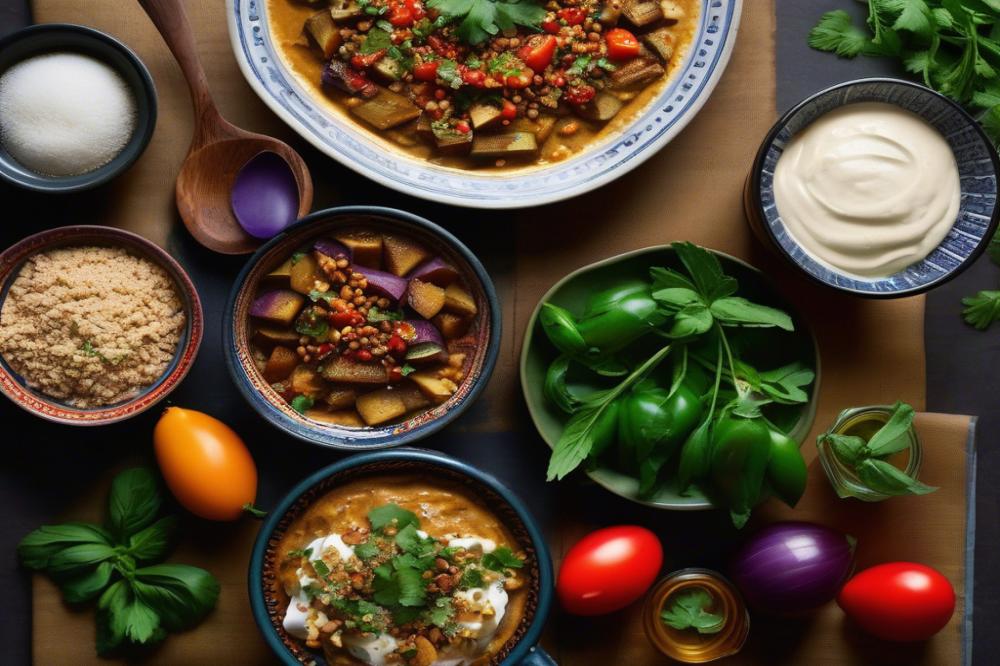
Lebanon has a rich culinary heritage, and Fatteh is a significant part of it. This dish serves as a comforting meal for many families. Traditions surrounding Fatteh stretch back through generations. Its warm flavors bring to mind memories of home and shared meals.
Gatherings often feature this dish prominently. During holidays and family celebrations, Fatteh takes center stage on the dining table. People enjoy its richness with family and friends. The combination of chickpeas, tahini, and garlic, layered over crispy pita bread, creates a sense of togetherness. Sharing food strengthens bonds among relatives and friends alike.
Different regions in Lebanon offer various recipes. Each region has its own twist on this beloved dish. In the north, for example, some might add extra spices to enhance the flavor. Others may lean towards sweet toppings for a distinct taste. The south enjoys a version featuring more yogurt, making it creamy and delicious. Even the style of eggplant preparation varies across areas, showcasing local preferences.
Lebanese cuisine thrives on these variations. The Mediterranean influence contributes to the complexity of flavors. With every bite, one can experience the harmony of spices and textures. Fatteh not only fills the stomach, but it also feeds the heart. Each family might have its own secret recipe passed down through years. Traditional cooking methods often blend the contemporary with age-old practices. As the dish evolves, the spirit of community remains strong, connecting generations.
Exploring Flavor Profiles of Lebanese Eggplant Fatteh
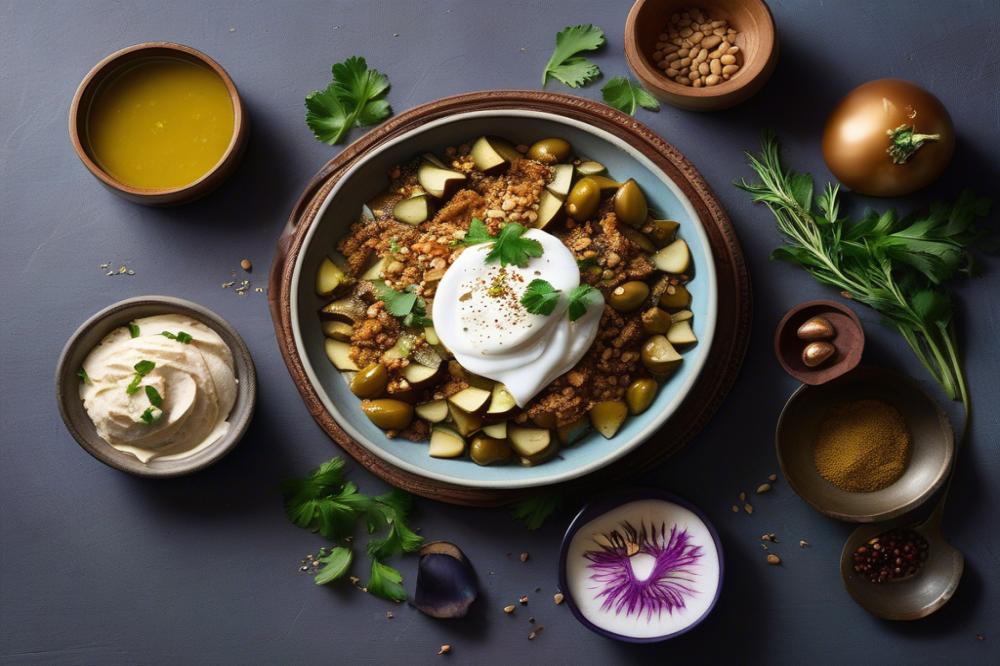
Piles of roasted eggplant create a base for this dish. Each bite introduces a warm, earthy flavor. The eggplant’s smooth texture contrasts beautifully with the crunch of toasted pita bread. This combination brings a satisfying crunch, adding depth to the meal.
Spices play a vital role in enhancing the overall taste. Common spices used include cumin, coriander, and paprika. These spices add warmth and a hint of smokiness. They work together, creating a balanced experience on the palate. Choosing the right spices can elevate the dish to new levels.
Tahini and garlic are essential components that bring their own flair. Garlic offers a pungent kick that awakens the senses. Its boldness pairs perfectly with the nutty flavor of tahini. Together, they form a creamy dressing that coats the eggplant and chickpeas nicely. The tahini adds richness, contributing to the dish’s desired texture.
Creamy yogurt also complements the flavors beautifully. The yogurt’s tangy nature provides a refreshing contrast to the roasted elements. When spooned over the warm eggplant, it creates a delightful harmony. This union of flavors is characteristic of Lebanese cuisine and Mediterranean dishes.
Chickpeas add heartiness to the recipe. Their protein-rich content and subtle flavor enhance the overall experience. The combination of chickpeas, tahini, garlic, and yogurt creates a nourishing meal. Pita bread serves not just as a side but as a vessel for enjoying each flavorful layer.
Overall, the interplay of these ingredients produces a delightful dish. It encourages exploration of different tastes and textures. Lebanese Eggplant Fatteh is more than a meal; it is a celebration of flavors.
Variations and Customizations of Eggplant Fatteh
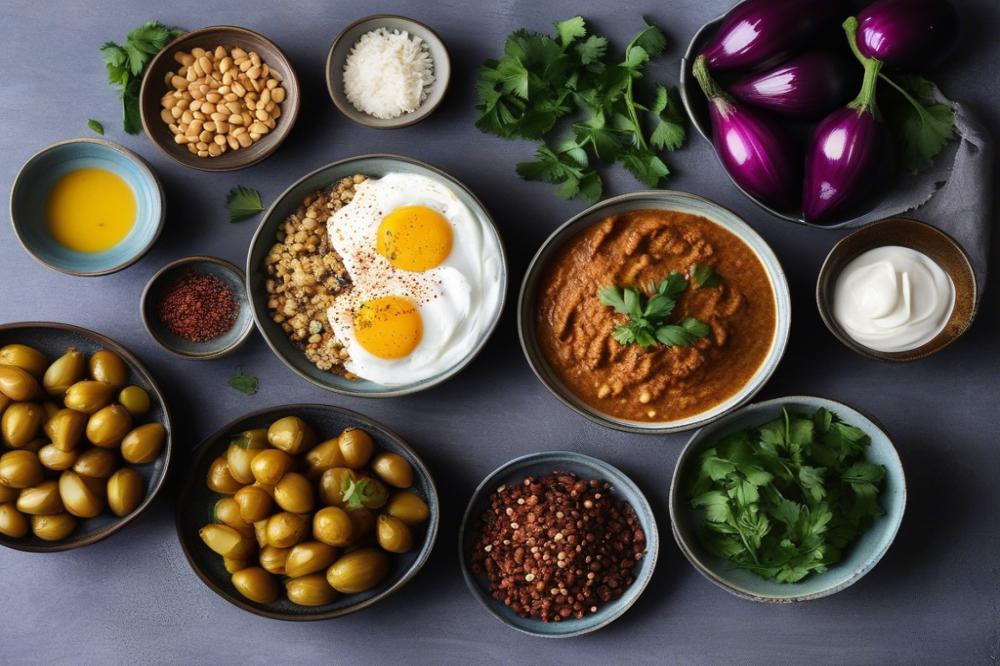
Eggplant Fatteh can be transformed in many ways. Customization allows for a personal touch to this beloved dish. Different proteins can change the overall flavor and texture. For instance, shredded chicken or lamb can provide richness. Grilled shrimp may also offer a delightful twist, suited for seafood lovers.
Vegetarians might enjoy adding sautéed mushrooms or roasted bell peppers for variety. These options can enhance the dish without meat. Additionally, adding lentils can introduce a robust protein source. Spiced chickpeas are another wonderful choice, boosting the dish’s heartiness.
When it comes to sauces or toppings, several alternatives exist. Tahini is a classic option that gives creaminess. Garlic yogurt can also elevate flavor with its tangy kick. Some recipes include a drizzle of pomegranate molasses for a sweet, fruity contrast. Other toppings like toasted pine nuts or almonds add a satisfying crunch. Roasted nuts complement the creamy layers beautifully.
Spices play a crucial role in Lebanese cuisine and can be adjusted to suit personal preferences. A pinch of cumin or sumac can add depth without overpowering the eggplant. Try incorporating fresh herbs too, such as parsley or mint, for an aromatic finish.
Choosing the right pita bread can also enhance the dish. Soft, warm pita bread serves as the base for your Fatteh. To add extra flavor, consider seasoning the bread before toasting. A sprinkle of za’atar could bring the Mediterranean feel to your plate.
Embracing the Joy of Lebanese Eggplant Fatteh
Preparing and savoring Lebanese Eggplant Fatteh is a delightful experience that introduces a spectrum of flavors to your palate. The rich, creamy layers of tahini intertwine beautifully with the tender, roasted eggplant and crisp pita bread. Each bite offers a harmonious blend of textures and tastes that celebrates the essence of Mediterranean cooking.
This dish is not only a treat for the taste buds but also an inviting opportunity to connect with a vibrant culture. Sharing this meal with family and friends can ignite conversations about its origins and the traditions behind it. Such connections deepen our appreciation for the food as well as the stories that accompany it.
Versatility makes the recipe even more appealing. Adjust the garnishes or spices according to personal preferences. You could add pine nuts for a nutty crunch or sprinkle pomegranate seeds on top for a burst of color and flavor. Experimenting will only enhance your culinary repertoire.
Exploring this dish is an essential part of one’s culinary journey through Mediterranean flavors. It encourages home cooks to embrace the art of layering flavors and textures. Whether served as a stunning appetizer or a hearty main dish, Lebanese Eggplant Fatteh is sure to leave a lasting impression. Find joy in the experience of preparing and enjoying this remarkable meal, and let it inspire your future cooking adventures.

